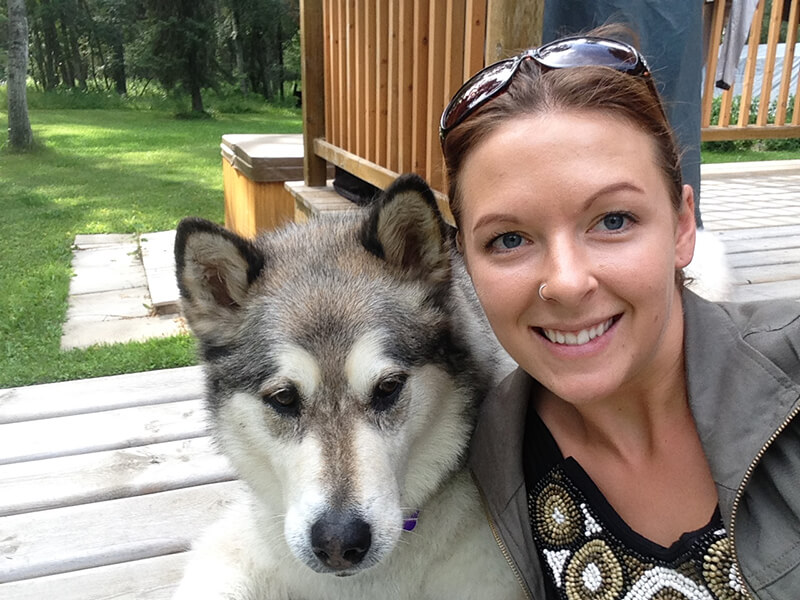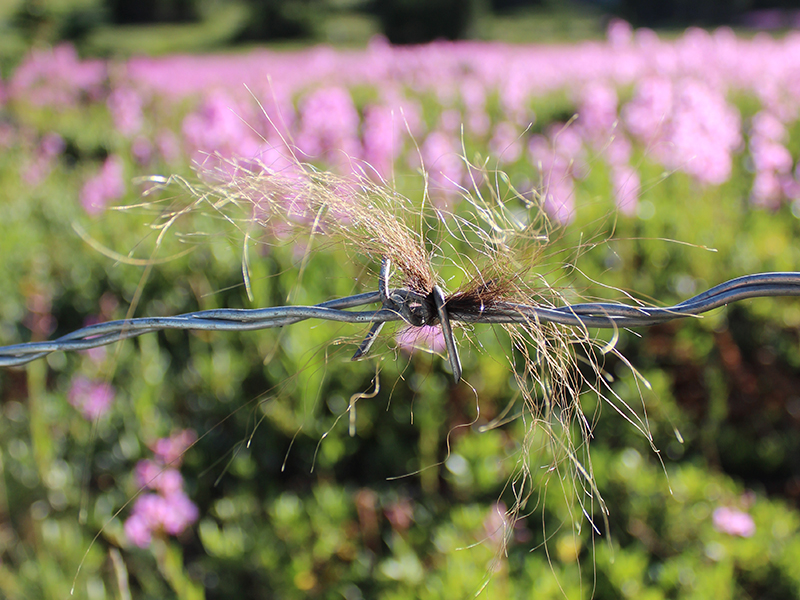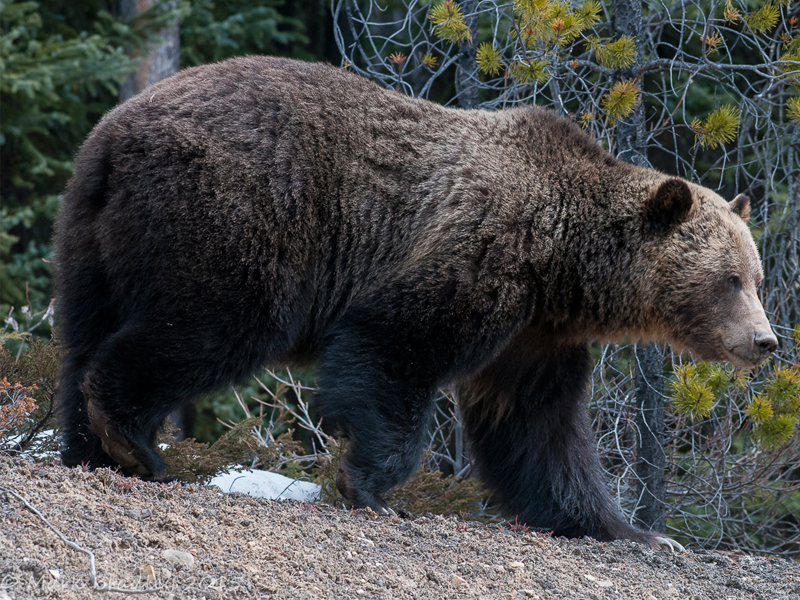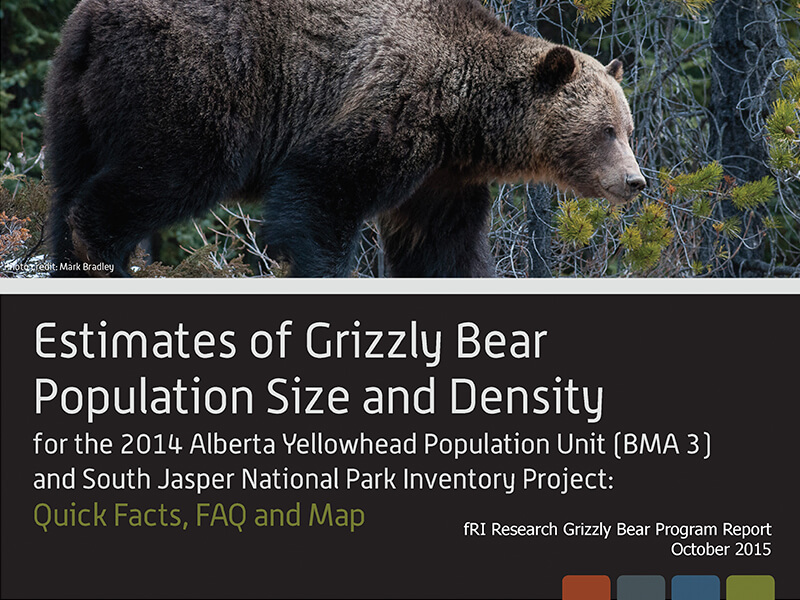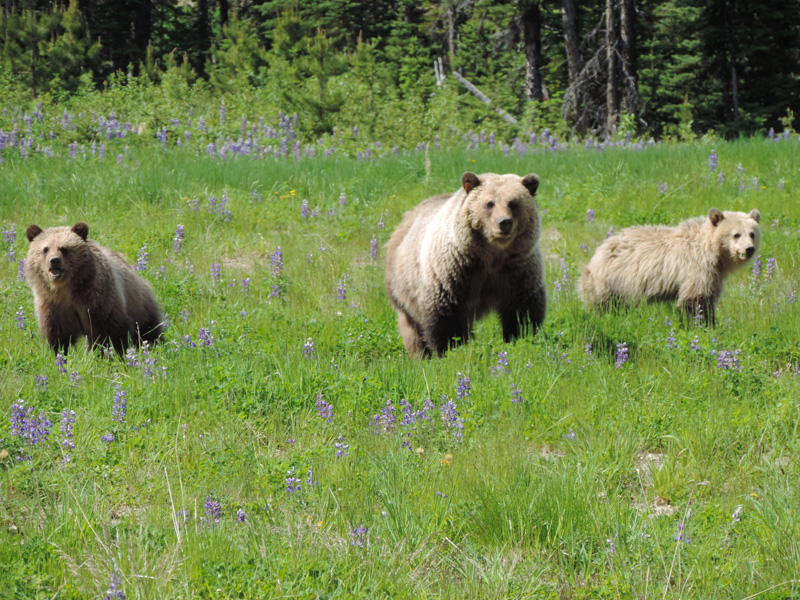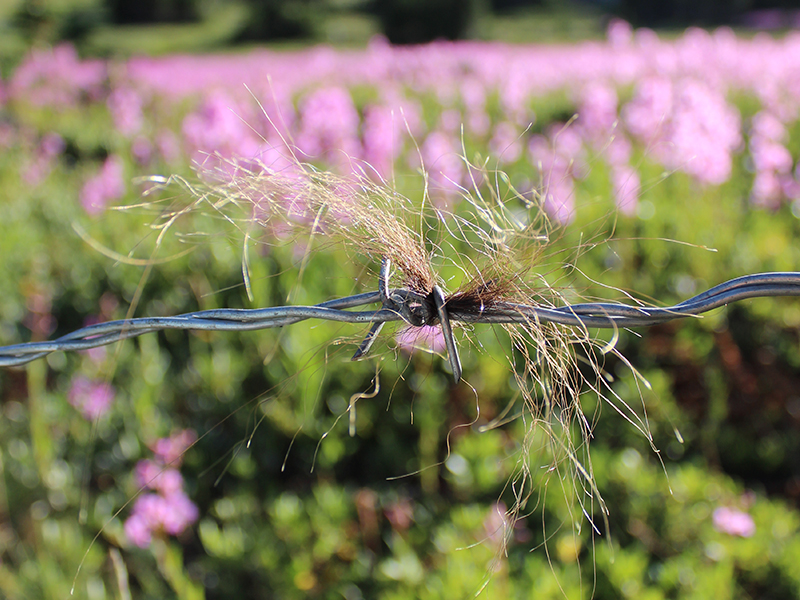
Yellowhead (BMA 3) Grizzly Bear Population Inventory
This project began in the Pembina area, but expanded as new partners, such as West Fraser, Parks Canada, and the government of Alberta joined the effort.
Over 250 hair snag sites were set up across the Yellowhead region, often in very remote areas. The result is the first repeat estimate of grizzly bear populations in Alberta.
Inventory of wildlife populations is often the first step needed to determine the appropriate conservation status of species and to develop or improve the management of those species. For threatened and endangered species, population monitoring is a critical step to developing effective recovery plans intended to stop or reverse the decline of a listed species. Recovery plans should be designed with the intent and ability to monitor the species throughout the recovery process as it serves to estimate trend in abundance and distribution and aids in understanding the ecological and human factors that influence those changes in time and space. Thus, it also serves to track the response of the species to recovery efforts and to inform, in a timely manner, appropriate management responses.
Grizzly bears have suffered dramatic range reductions and suspected population declines due to over-exploitation and habitat loss. These issues, and the continued threat of human-caused mortality rates, have spurred conservation efforts in Alberta over the past decade. A province-wide hunting moratorium was instituted in 2006 and an extensive DNA-based capture-markrecapture (CMR) study was conducted from 2004 to 2008. This CMR study provided the first population estimates for the majority (five out of seven) of the Bear Management Areas (BMAs) in the province. Baseline population estimates from these provincial DNA inventories were used, along with other information, to change the status of grizzly bears in Alberta to Threatened.
Given that more than a decade has passed since the first DNA inventory in Alberta (BMA 3 in 2004), current and complete grizzly bear inventory data is needed to evaluate and adapt recovery and management efforts.
This project uses DNA from hair snags to estimate the population of grizzly bears in BMA 3, Jasper National Park, and the White Goat Wilderness Area. It began in 2013 just in the Pembina area, as part of a project for Weyerhaeuser examining how forestry changes the landscape.
2014 was the ten-year anniversary of the last DNA-based population inventory, which highlighted the need for the first repeat population estimate. As new partners, such as West Fraser, Parks Canada, and the Government of Alberta joined the effort, the fRI Research Grizzly Bear Program had the opportunity to conduct just this study.
In the 2014 field season, over 250 hair snag sites were set up across the Yellowhead region, often in very remote areas. Snag sites consist of a scent lure (rancid cattle blood and oil poured on a pile of branches) enclosed by a strand of barbed wire. When curious bears come to investigate the smell, they leave clumps of hair on the barbs. The field crew return regularly to the hair snag sites to collect the hair, and DNA is extracted for analysis.
The result is the first repeat estimate of grizzly bear populations in Alberta. Read the report.
Methods
In the 2014 field season, over 250 hair snag sites were set up across the Yellowhead region, often in very remote areas. Snag sites consist of a scent lure (rancid cattle blood and oil poured on a pile of branches) enclosed by a strand of barbed wire. When curious bears come to investigate the smell, they leave clumps of hair on the barbs. The field crew return regularly to the hair snag sites to collect the hair, and DNA is extracted for analysis.
These DNA-based sampling techniques are a non-invasive adaptation of capture-mark-recapture (CMR) methods—the most frequently employed approach for estimating wildlife population size across a wide variety of wildlife species. A number of authors have concluded that noninvasive genetic sampling using hair is ideally suited for monitoring rare or hard-to-capture species like grizzly bears because the hair can be collected remotely without having to catch or disturb the animal. As a result, numerous projects outside of Alberta have also used this technique to estimate grizzly bear population size, including projects in British Columbia.
In 2014, we selected site locations based on the 180-cell 7 km x 7 km grid system applied to BMA 3 during the 2004 grizzly bear DNA inventory. One hair snag site was placed in each grid cell. By maintaining close consistency between the 2004 and 2014 study design and sampling strategies, we facilitated direct comparisons between these two datasets. We modified the 2014 grid, however, to better reflect core and secondary grizzly bear conservation areas, which had not been established or mapped before the 2004 DNA inventory.
Specifically, we placed additional cells within the Whitegoat Wilderness Area. Where possible, we placed sites at the same within-cell locations as in previous DNA surveys (2004, 2011, 2013). Where necessary, we generated new site locations in a geographic information system (GIS) prior to fieldwork using a grizzly bear RSF model, a model of buffaloberry abundance, aerial photographs, and expert opinion. Preference was given to areas of high RSF, high buffaloberry abundance, and reasonable access. In the field, we also targeted site locations near riparian areas, linear clearings, natural meadows, and cutblocks, based on research indicating site placement in these areas is important for maximizing detection at fixed hair snag sites. Sites were also placed at least 100 m from roads, trails, and facilities.
Samples were sent to Wildlife Genetics International for extraction and sequencing. 21 loci were sequenced to give each bear a unique ID and establish parent-offspring relationships.
First stage starts in the Drayton Valley area FMA, funded by Weyerhaeuser
New partners join and the scope expands to the entire BMA 3 plus JNP.
Grizzly bear hair samples collected at over 250 sites across BMA 3 and JNP.
Fieldwork completed
hair snags sent for DNA extraction and analysis.
Final report published.
